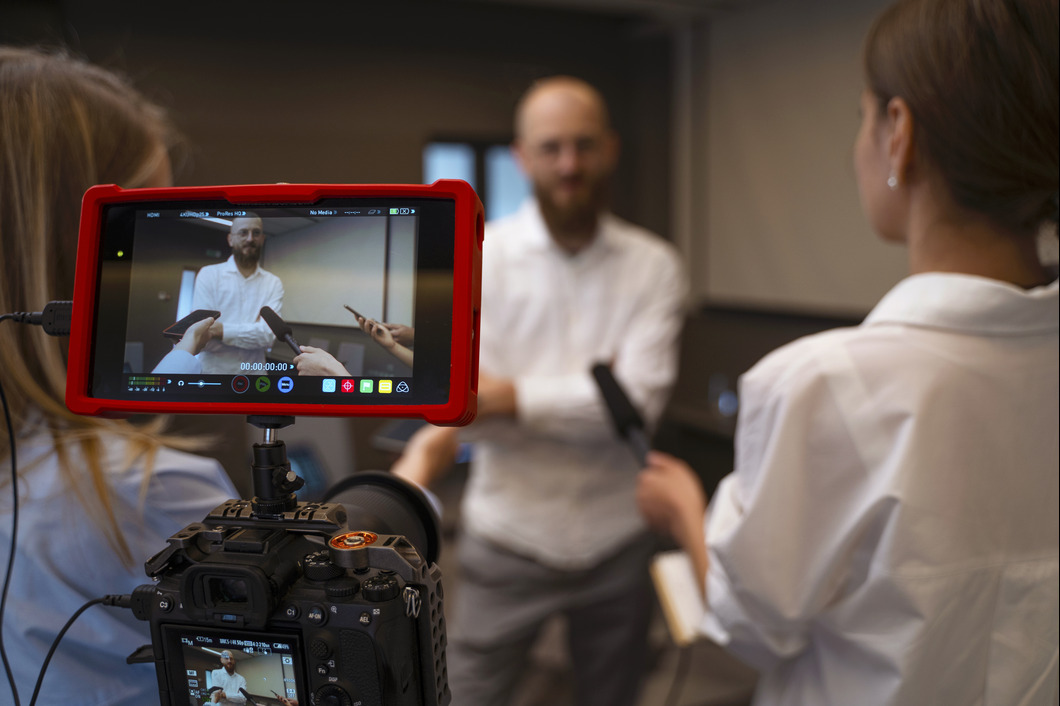Legal Videography: Changing the Way Evidence is Recorded and Presented
Legal Videography: Changing the Way Evidence is Recorded and Presented
Blog Article
Exploring the Vitality of Lawful Videography: a Comprehensive Insight Into Its Functionality in Preserving Accurate Visual Records for Legal Situations
Legal videography stands as an essential component in the world of lawful procedures, functioning as a quiet yet effective onlooker in the pursuit of justice. The use of video clip technology in recording lawful cases exceeds simple record-keeping; it encapsulates the extremely essence of occasions, emotions, and statements that unfold within court rooms. By thoroughly catching aesthetic evidence, legal videography not only protects the accuracy of these minutes but additionally gives a deeper understanding of the details entailed. As we explore the performance and significance of lawful videography in the context of legal situations, a profound understanding dawns upon the essential role it plays in forming the program of justice.
Significance of Legal Videography
Highlighting the critical function of legal videography in modern legal procedures, its relevance exists in its capacity to supply irrefutable visual evidence that boosts the presentation of facts and statements. By capturing online events, depositions, and witness statements in a video style, lawful videography makes sure that every nuance, information, and expression is precisely maintained for later review. This visual paperwork works as a powerful tool in court rooms, enabling courts and jurors to better understand the context of a case and make notified decisions based on the here and now proof.
Furthermore, legal videography adds to increased transparency and liability in the lawful system. It aids stop false impression or control of info by offering a objective and clear record of events. This visual evidence can also be essential in dealing with conflicts, validating statements, and ultimately strengthening the credibility of lawful procedures. Basically, the importance of legal videography exists in its capability to support the stability of the lawful procedure by capturing and protecting exact visual records that support the quest of justice.
Functionality in Legal Documents
Lawful videography's function in contemporary legal procedures prolongs beyond providing visual evidence; its capability in legal paperwork is vital for precisely maintaining the details of testaments and events. Through the meticulous recording of depositions, court proceedings, witness testimonies, and criminal activity scene investigations, lawful videography makes sure an unfiltered account of occasions that can be reviewed and assessed throughout the lawful procedure. This accurate documentation works as an essential resource for juries, lawyers, and judges to reference particular minutes, body language, faces, and subtleties that may not be fully recorded in written transcripts alone.
Furthermore, legal videography plays a pivotal function in preserving the integrity of legal process by minimizing the risk of false impression or control of info. The aesthetic documents recorded through lawful videography supply an impartial representation of the realities provided throughout an instance, using a dependable and detailed resource of evidence that can significantly impact the end result of lawful conflicts (Legal Videography). Basically, the performance of lawful videography in legal documentation works as a cornerstone in supporting openness, precision, and fairness within the legal system
Significance in Visual Proof Preservation
Preserving aesthetic proof through thorough recording methods is an essential element of lawful videography. The significance of aesthetic proof preservation can not be overemphasized in lawful proceedings. Aesthetic proof, such as video clips of crime scenes, accidents, or testaments, can supply important insight into occasions that words alone may not completely capture. By properly recording these visuals, legal videographers play an important duty in ensuring the integrity and credibility of proof offered in court.
Aesthetic proof Learn More Here preservation likewise assists in avoiding misunderstandings or misinterpretations that can emerge from created or spoken testaments. The capability to see and listen to occasions as they occurred can considerably affect the outcome of a case. Additionally, aesthetic evidence can work as an effective tool for both the prosecution and defense in providing their debates persuasively.
Duty in Ensuring Justice
In the search of fair and just legal end results, the role of lawful videography is vital. Legal videography plays a crucial duty in ensuring justice by giving objective and exact aesthetic proof that can substantially impact the outcome of lawful cases.
Furthermore, legal videography works as a means of preserving essential moments and details that might be missed out on or misunderstood in written transcripts (Legal Videography). By documenting scenes, actions, and interactions in real-time, legal videography assists stop misrepresentations and ensures that all events entailed have accessibility to the very same information, promoting transparency and accountability in the legal procedure. Inevitably, making use of lawful videography not only improves the performance of lawful procedures yet also promotes the concepts of justice and equity in the legal system
Vital Device for Legal Instances

Conclusion
To conclude, lawful videography plays a vital function in preserving precise visual documents for legal instances. Its value hinges on its performance in legal paperwork, value in visual proof preservation, and role in guaranteeing justice. As a vital tool for lawful cases, lawful videography works as a beneficial source for providing visual proof and contributing to the general honesty of the legal procedure.
Lawful videography's function in modern-day lawful proceedings expands beyond giving aesthetic proof; its performance in lawful documents is essential for properly preserving the details of occasions and testaments. In significance, the performance of lawful videography in lawful documentation offers as a foundation in maintaining transparency, accuracy, and fairness within the lawful system.
Inevitably, the use of lawful find more information videography not just boosts the effectiveness of lawful process but additionally upholds the concepts of justice and equity in the lawful system.

As a vital tool for lawful situations, legal videography offers as an important source for providing aesthetic proof and contributing to the general integrity of the legal process.
Report this page